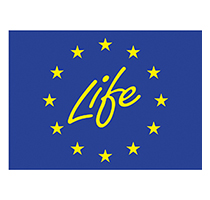Communication and dissemination actions
Communication and dissemination actions
ACTION B. 1 Project website
This action consists of the creation, update and maintenance of a project website. The dissemination of information through the projects website is one of the most important portals to advertise the project and deliver key messages to a global audience. The Information Technology Officer at EPPO will design the project website with input from the Project Manager and the Project Board. The website will be ‘live’ 3 months after the starting date of the project. The official language of EPPO is English and French and the website will be maintained in English with a French summary.
ACTION B. 2 Reporting the projects outputs
This action will involve reporting the outputs of the project in a number of formats to reach key audiences. Reporting the outputs of the project both in an internal context (within EPPO, within the project partners and between EPPO and the funders) and external (between EPPO and the stakeholders/general public) is essential to disseminate the outputs of the project. EPPO will produce progress reports in conjunction with the project partners throughout the duration of the project. A biannual electronic newsletter will be produced and disseminated via the projects website and via e-mail to interested stakeholders. The language of the newsletter will be in English and sent to 2 500 individuals.
ACTION B. 3 Species specific datasheets
The action involves the publication of 16 species specific datasheets. This action will be conducted by the EPPO Secretariat at the EPPO Headquarters. When a risk assessment is carried out on a plant species, EPPO will produce a detailed datasheet on each species which will be published in the EPPO Bulletin and available as an open access document via the Journals website, EPPOs website on invasive alien plants and the dedicated project website. The datasheet will form a condensed version of the PRA document and will include the following sections: identity, geographical distribution, morphology, biology and ecology, uses and benefits, pathways for movement, summary of invasiveness, regulatory status, references and images of the species. The datasheet will be published in English.
ACTION B. 4: Training workshops
The purpose of this action is to provide training to key stakeholder groups in the prioritization process and pest risk assessment of IAPs. EPPO will provide two training workshops where the first will train 20 participants in the process of IAP prioritization using CAPRA software and the second will train 20 participants on pest risk assessment using CAPRA software. Both workshops will be held at the EPPO headquarters in Paris.
ACTION B. 5 Networking with other LIFE and/or non-LIFE projects
This action will establish networks with other LIFE or non-LIFE projects where there are clear synergies. This action will start at the beginning of the project and continue throughout the life of the project. Meetings will be set-up to establish links and potential work-programmes/funding sources which can build on the IAP-RISK and similar projects.
ACTION B. 6 LIFE information boards
Posters will be disseminated to national and regional stakeholders working with invasive alien plants. The first poster will detail the selection of the 16 species for which the project will conduct a risk assessment. Additionally, 1 poster will be designed for each of the 16 species upon completion of the risk assessment where the posters will detail the main outcome of the process.

